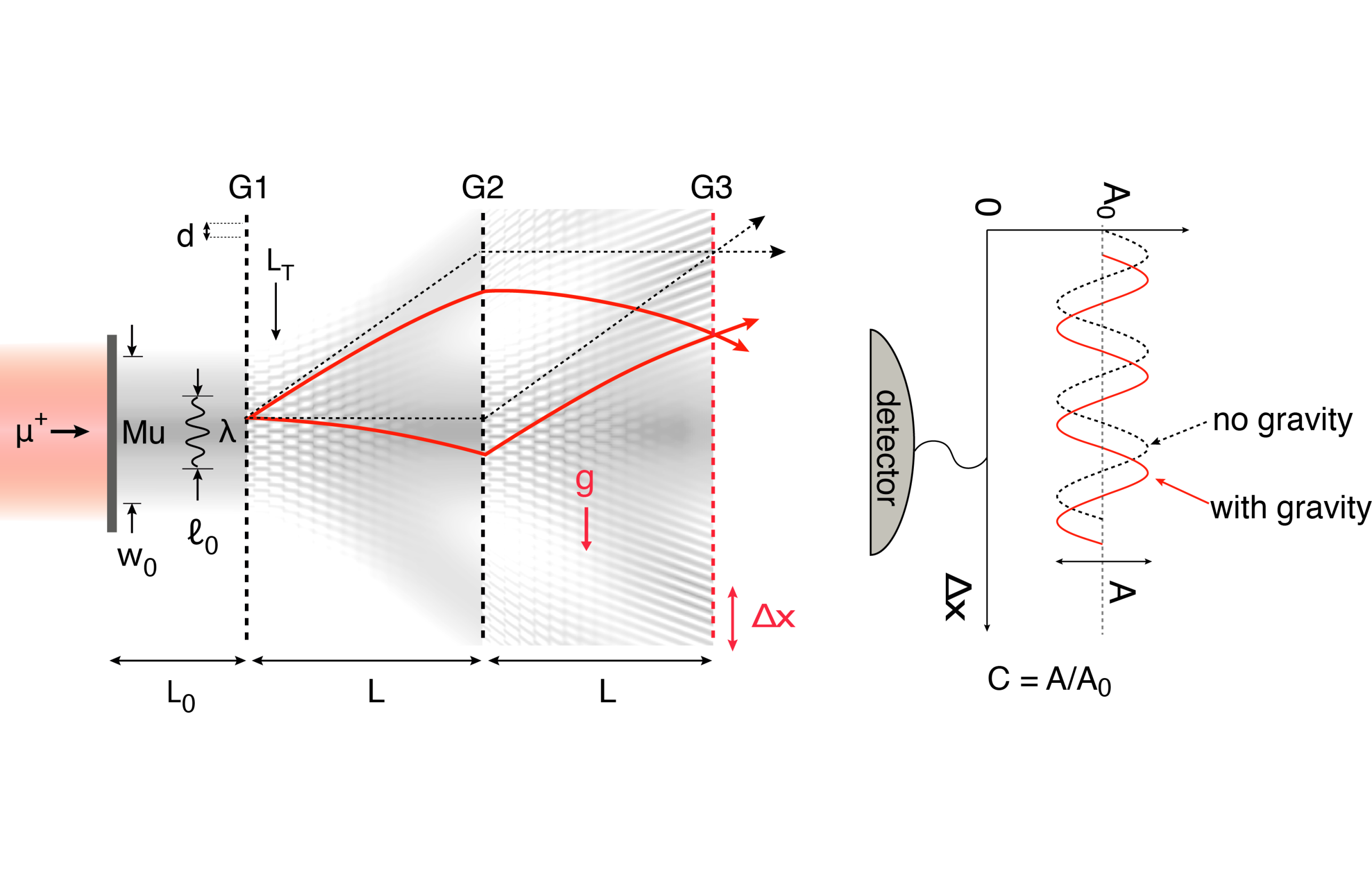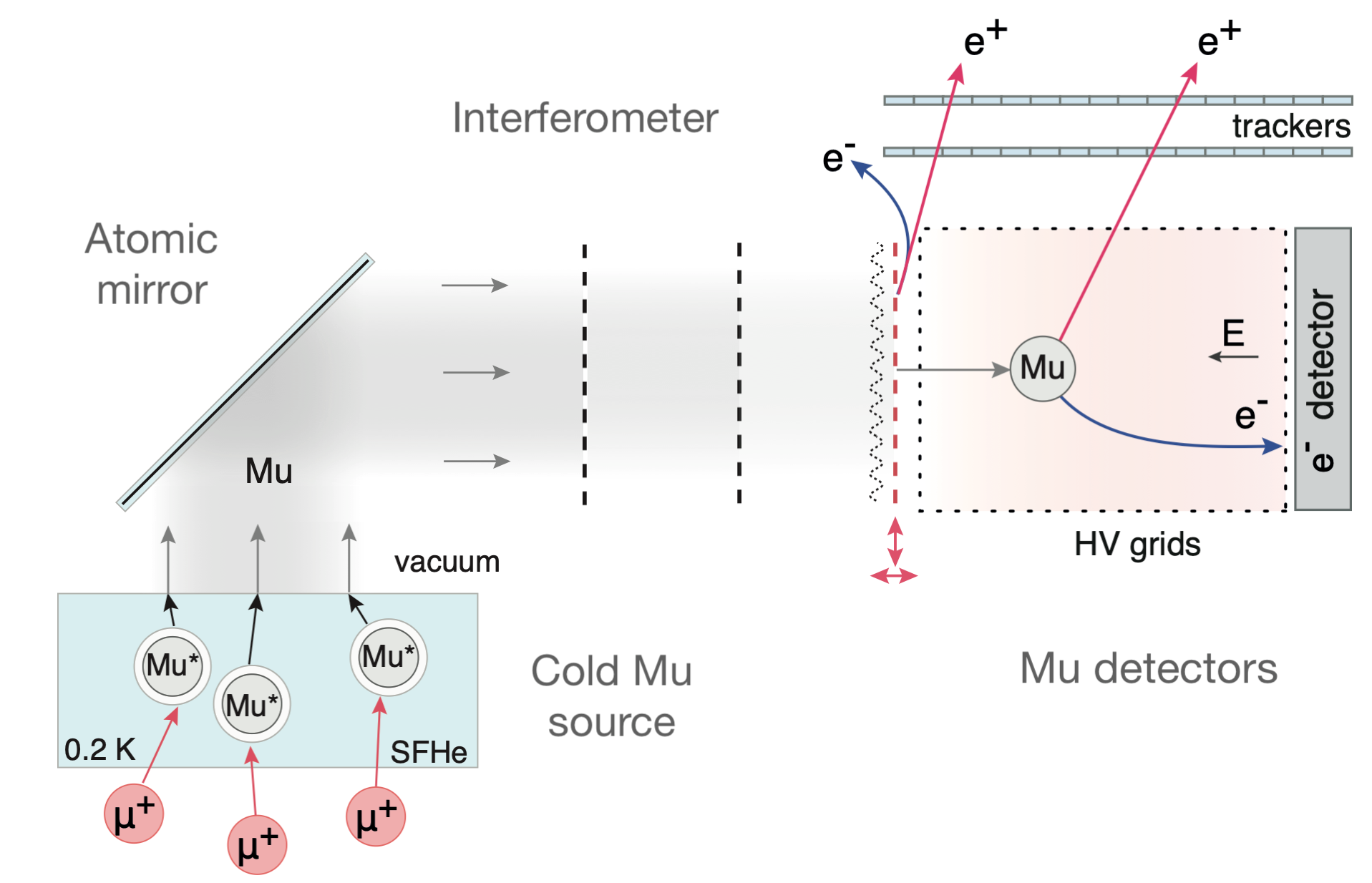Muonium Experiments
Cold muonium beam for atomic physics and antimatter gravity experiments
Muonium (Mu) is a hydrogen-like exotic atom, consisting of a positive muon (μ+) and an electron (e-). Laser spectroscopy of the Mu 1s-2s transition, and microwave spectroscopy of the Mu ground state hyperfine structure provides precision measurements of important fundamental constants (like the muon mass or magnetic moment), while e.g. searches for muonium-antimuonium conversion put limits on the strength of charged lepton family number violation. Most of these experiments are, however limited by the quality of the Mu source.

We are investigating novel methods to create a high quality atomic beam of muonium, based on μ+ → Mu conversion in superfluid helium (SFHe).
Using the new cold muonium source, we are also proposing a new atom interferometry experiment with Mu atoms that would enable us to carry out an exotic test of the weak equivalence principle.
Muonium Gravitiy Experiment
The mass of Mu is dominated (≈ 200 : 1) by the positive anti-muon (μ+), which is an elementary antiparticle, and also a second generation lepton. Direct measurements of the gravitational interaction, and hence testing the weak equivalence principle with such exotic particles, have not yet been realized experimentally, and only antihydrogen and positronium have been proposed as viable other candidates. Measuring the gravitational interaction of antimatter might aid explaining the baryon asymmetry of the Universe, or point towards unified theories of gravity. Among the three neutral candidates, Mu can uniquely demonstrate how gravity affects charged leptons of different flavors.
Atom interferometers are sensitive tools to measure inertial forces to high precision. In a three-grating atom interferometer shown here, the first two gratings are creating an interferogram, and the vertical phase of this pattern will change as the atoms fall freely during propagation.

The small shift in phase the Mu atoms can acquire during their short lifetime can be measured by applying a third grating, and counting the number of atoms as a function of the vertical grating displacement.
Muonium from superfluid helium
To reach the ultimate precision with a laser spectroscopy experiment, and to make an interferometry experiment feasible, a novel Mu source has to be developed. Present state-of-the-art Mu sources (like silica aerogel, or mesoporous SiO2) emit Mu atoms with a large (thermal) energy distribution, and wide angular distribution, not suitable for interferometry. Cooling these porous samples below 100 K results in rapidly declining numbers of vacuum-emitted muonium due to decreased mobility, and atoms sticking to the pore walls.

Our proposed method relies on stopping μ+ in a thin layer of superfluid helium (SFHe), and forming Mu by capturing an electron from the ionization trail. From bulk SFHe at low temperatures (T<0.3 K) a significant fraction of the Mu are expected to diffuse to the SFHe surface within their lifetime. Due to the large negative work function in SFHe, Mu atoms are expected to be ejected from the surface with well defined velocities of ~6 mm/μs (E/kB~270 K) in the direction of the surface normal, resulting in a high quality Mu beam.
The cold Mu beam will be then directed towards an interferometer setup inside the cryostat using superfluid coated surfaces as atomic mirrors, or they can be used for laser spectroscopy measurements.
Present Developments
We carried out feasibility studies, both, on the theoretical and the experimental side of the experiment. We demonstrated high Mu production efficiencies in bulk superfluid helium, and worked out vital techniques needed for efficient detection of vacuum muonium.
Our group at ETH and PSI is presently working on new cryogenic and detector systems to develop the cold Mu beam, while in parallel we study methods in collaboration with nanotechnology groups to realize the first prototype of the Mu interferometer.
